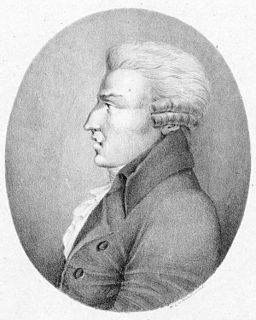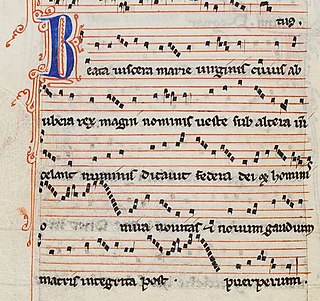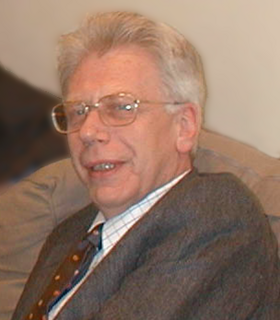Related Research Articles

The Mass, a form of sacred musical composition, is a choral composition that sets the invariable portions of the Eucharistic liturgy to music. Musical Masses take their name from the Catholic liturgy called "the Mass".

Francesco Durante was a Neapolitan composer.

Francesco Landini was an Italian composer, organist, singer, poet and instrument maker who was a central figure of the Trecento style in late Medieval music. One of the most revered composers of the second half of the 14th-century, he was by far the most famous composer in Italy.

The conductus was a sacred Latin song in the Middle Ages, one whose poetry and music were newly composed. It is non-liturgical since its Latin lyric borrows little from previous chants. The conductus was northern French equivalent of the versus, which flourished in Aquitaine. It was originally found in the twelfth-century Aquitanian repertories. But major collections of conductus were preserved in Paris. The conductus typically includes one, two, or three voices. A small number of the conductus are for four voices. Stylistically, the conductus is a type of discant. Its form can be strophic or through-composed form. The genre flourished from the early twelfth century to the middle of thirteenth century. It was one of the principal types of vocal composition of the ars antiqua period of medieval music history.
Jacopo da Bologna was an Italian composer of the Trecento, the period sometimes known as the Italian ars nova. He was one of the first composers of this group, making him a contemporary of Gherardello da Firenze and Giovanni da Firenze. He concentrated mainly on madrigals, including both canonic (caccia-madrigal) and non-canonic types, but also composed a single example each of a caccia, lauda-ballata, and motet.
The villancico or vilancete was a common poetic and musical form of the Iberian Peninsula and Latin America popular from the late 15th to 18th centuries. With the decline in popularity of the villancicos in the 20th century, the term became reduced to mean merely "Christmas carol". Important composers of villancicos were Juan del Encina, Pedro de Escobar, Francisco Guerrero, Manuel de Zumaya, Juana Inés de la Cruz, Gaspar Fernandes, and Juan Gutiérrez de Padilla.

The Trecento was a period of vigorous activity in Italy in the arts, including painting, architecture, literature, and music. The music of the Trecento paralleled the achievements in the other arts in many ways, for example, in pioneering new forms of expression, especially in secular song in the vernacular language, Italian. In these regards, the music of the Trecento may seem more to be a Renaissance phenomenon; however, the predominant musical language was more closely related to that of the late Middle Ages, and musicologists generally classify the Trecento as the end of the medieval era. Trecento means "three hundred" in Italian but is usually used to refer to the 1300s. However, the greatest flowering of music in the Trecento happened late in the century, and the period is usually extended to include music up to around 1420.
In Renaissance music, the cyclic mass was a setting of the Ordinary of the Roman Catholic Mass, in which each of the movements – Kyrie, Gloria, Credo, Sanctus, and Agnus Dei – shared a common musical theme, commonly a cantus firmus, thus making it a unified whole. The cyclic mass was the first multi-movement form in western music to be subject to a single organizing principle.

Antonio "Zacara" da Teramo was an Italian composer, singer, and papal secretary of the late Trecento and early 15th century. He was one of the most active Italian composers around 1400, and his style bridged the periods of the Trecento, ars subtilior, and beginnings of the musical Renaissance.

Messe de Nostre Dame is a polyphonic mass composed before 1365 by French poet and composer Guillaume de Machaut. Widely regarded as one of the masterpieces of medieval music and of all religious music, it is historically notable as the earliest complete setting of the Ordinary of the Mass attributable to a single composer.
Willi Apel was a German-American musicologist and noted author of a number of books devoted to music. Among his most important publications are the 1944 edition of the Harvard Dictionary of Music and the French Secular Music of the Late Fourteenth Century series.
The Tournai Mass is a polyphonic setting of the mass from 14th-century France. It is preserved in a manuscript from the library of the Tournai Cathedral.

Missa Papae Marcelli, or Pope Marcellus Mass, is a mass sine nomine by Giovanni Pierluigi da Palestrina. It is his best-known mass, and is regarded as an archetypal example of the complex polyphony championed by Palestrina. It was sung at the Papal Coronation Masses.
Egardus was a European Medieval composer of ars subtilior. Almost no information survives about his life, and only three of his works are known. A certain "Johannes Ecghaerd", who held chaplaincies in Bruges and Diksmuide, may be a possible match for Egardus. The extant works—a canon and two Glorias—appear to be less complex than music by mid-century composers, possibly because they date from either very early or very late in Egardus' career.
The Trent Codices are a collection of seven large music manuscripts compiled around the middle of the 15th century, currently kept in the northern Italian city of Trent. They contain mostly sacred vocal music composed between 1400 and 1475. Containing more than 1,500 separate musical compositions by 88 different named composers, as well as a huge amount of anonymous music, they are the largest and most significant single manuscript source from the entire century from anywhere in Europe.
Most of Johann Sebastian Bach's extant church music in Latin —settings of the Mass ordinary and of the Magnificat canticle— dates from his Leipzig period (1723–50). Bach started to assimilate and expand compositions on a Latin text by other composers before his tenure as Thomaskantor in Leipzig, and he continued to do so after he had taken up that post. The text of some of these examples by other composers was a mixture of German and Latin: also Bach contributed a few works employing both languages in the same composition, for example his early Kyrie "Christe, du Lamm Gottes".
Grazioso da Padova or Gratiosus de Padua was an Italian composer of the Middle Ages and early Renaissance.
Jo[hannes] Susay or Jehan Suzay was a French composer of the Middle Ages. He is the composer of three ballades in the ars subtilior style, all found in the Chantilly Codex: A l'albre sec, Prophilias, un des nobles, and Pictagoras, Jabol et Orpheus. The last ballade is also found in the Boverio Codex, Turin T.III.2, with the more accurate incipit "Pytagoras, Jobal, et Orpheus". A a three-voice Gloria "in fauxbourdon-like style" found in the Apt codex is also attributed to Susay.

Music in Medieval England, from the end of Roman rule in the fifth century until the Reformation in the sixteenth century, was a diverse and rich culture, including sacred and secular music and ranging from the popular to the elite.

David Fallows is an English musicologist specializing in music of the late Middle Ages and Renaissance and the performance practice of music. He is a leader in fifteenth-century music studies, particularly Guillaume Dufay, Josquin des Prez, and secular song.
References
- ↑ Brewer, Charles. "The Historical Context of Polyphony in Medieval Hungary: An Examination of Four Fragmentary Sources," Studia Musicologica Academiae Scientiarum Hungaricae 32 (1990), pp. 5–21.
- ↑ Fischer, Kurt von. "Sant Omer" in Grove Dictionary of Music and Musicians.
- ↑ Layton, Billy Jim. "Italian Music for the Ordinary of the Mass, 1300-1450." Ph.D. dissertation: Harvard University, 1960
- ↑ Facchin, Francesco. "Stili Vaganti!" in Zimei, Francesco, editor, Antonio Zacara da Teramo e il suo tempo (Lucca: Libreria Musicale Italiana, 2004 [i.e., 2005]). pp. 359–81.
- ↑ Cuthbert, Michael Scott. "Trecento Fragments and Polyphony beyond the Codex." Ph.D. dissertation: Harvard University, 2006. Chp. 2.